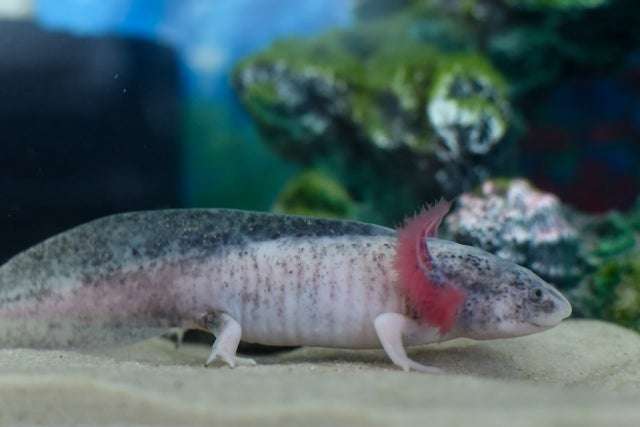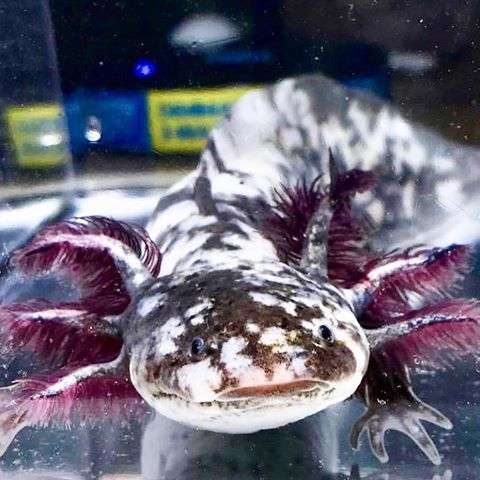
Description
Scientific Name: Ambystoma mexicanum
The paedomorphic salamander known as the axolotl (Ambystoma mexicanum) is related to the tiger salamander. While most salamander species lose their external gills as they become older, the axolotl still has them. This is because axolotls are substantially more aquatic than other salamander species according to their neoteny evolution.
Their eyes lack lids, and their skulls are broad. Their limbs are undeveloped, and their digits are long and slender. Males may be recognized by their enlarged cloacae, which are lined with papillae, while females can be recognized by their broader bodies, which are filled with eggs.
Habitat
Only the freshwater of Lake Xochimilco and Lake Chalco in the Valley of Mexico are home to the axolotl. In order to minimize flooding, Lake Chalco was drained, and Lake Xochimilco is now only a shell of what it once was, with canals serving as its main features.
Behavior
Axolotls can be aggressive towards one another even though they are very peaceful when left alone if they are stressed, malnourished, or crowded.
As Pet/ In Captivity

Housing
For axolotls, at least a 15 to 20 gallon fish tank is advised. As these animals frequently attempt to escape their confinement, make sure the tank has a tight-fitting lid. For these entirely aquatic creatures, the tank doesn’t need a land space. The water depth must be at least a little bit greater than the size of your axolotl. However, adding more depth will improve the water’s quality and allow your animal more space to move around.
Some owners choose to leave the tank’s bottom empty, while others think doing so could stress the axolotl if it can’t gain a foothold on the smooth surface. It must be coarse gravel that is larger than the axolotl’s head if gravel is utilized as a foundation. A blockage could be created by ingesting fine gravel.
Axolotls can drink tap water that has been cleaned with an aquarium water conditioner to eliminate chlorine and chloramines. Make sure the pH of the water stays between 6.5 and 7.5 and never use distilled water. (Most pet stores have water test kits you can use to examine the water.) A filtered aquarium is easier to maintain, according to most owners, because unfiltered water needs to be changed frequently to remove waste. If a filter is installed on the tank, it should have a slow filtration rate. An axolotl may experience stress from strong currents produced by robust filters.
Cleaning a filtered tank normally involves syphoning garbage from the bottom of the tank and doing a weekly 20% water change. You’ll probably need to perform a 20% water change every day or every other day if you’re not utilizing a filter
Food and Water
Axolotls eat small fish, amphibians, worms, crabs, and snails in their natural habitat. They can be fed different brine prawns, tiny slices of beef or liver, earthworms, bloodworms, tubifex worms, other frozen fish feeds and fish pellets when kept in captivity. Worms and fish you caught yourself shouldn’t be fed to animals since they may have parasites. Generally speaking, vitamin and mineral supplements are not required.
If you have questions about how much food to give your axolotl or how frequently to feed it, talk to your veterinarian because it depends on its size and age. Most adults typically consume two to three meals per week. One of the greatest ways to feed is to hold the food in a pair of long-nosed forceps close to the animal in the tank. Additionally, you might merely throw the food into the water as close to the axolotl as you can. To keep the water clean, remove any leftover food from the tank each day.
Table





